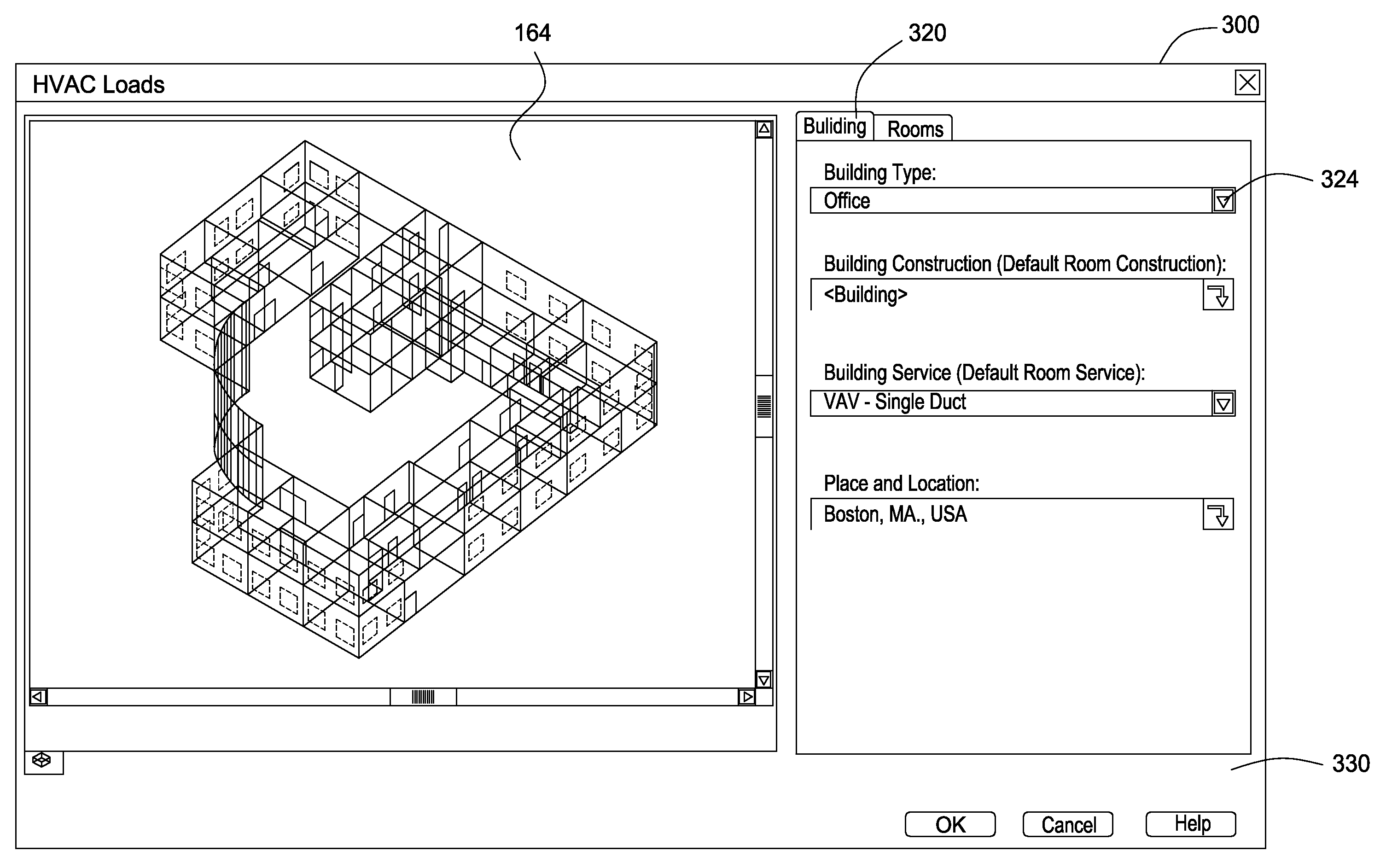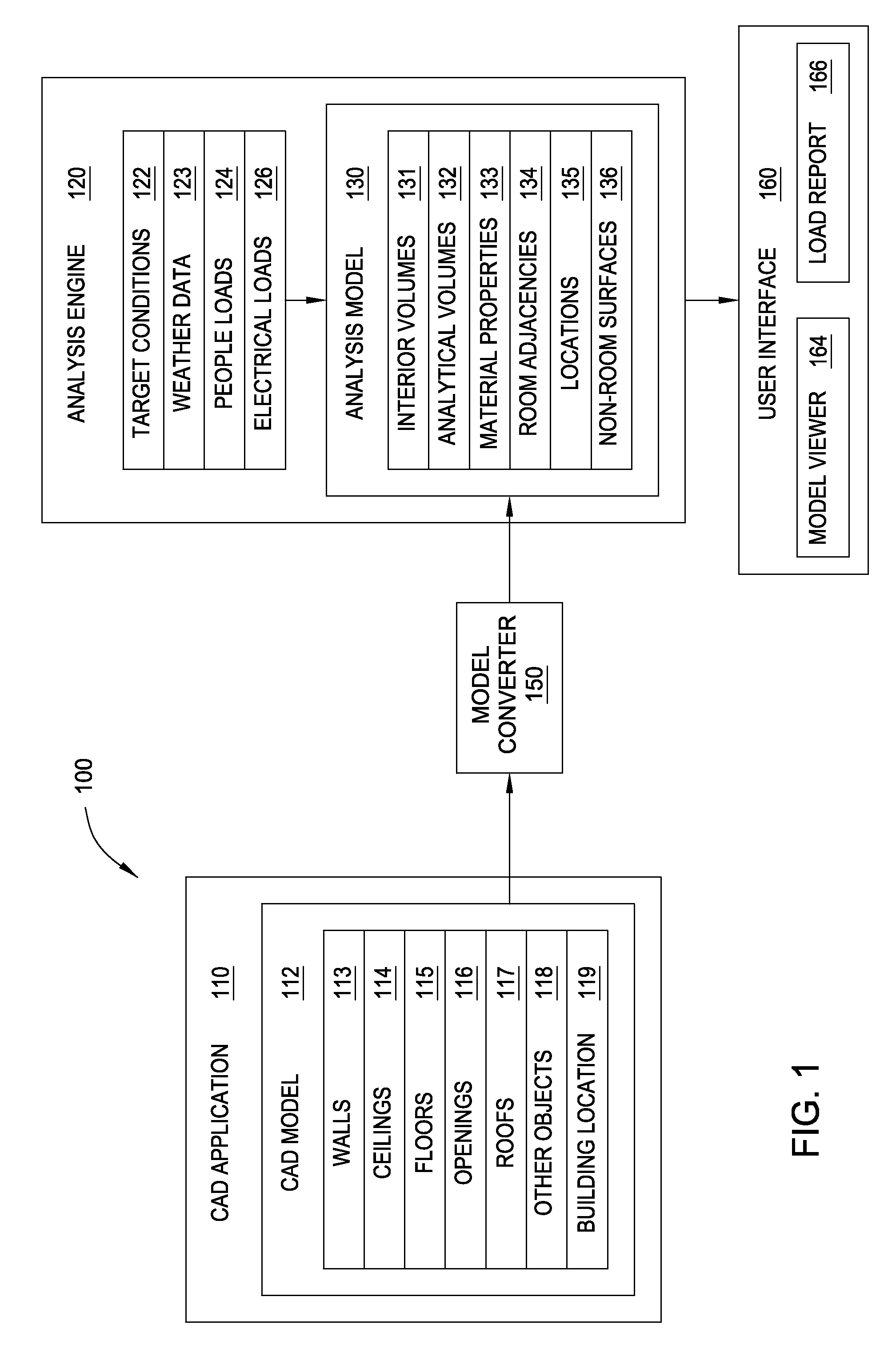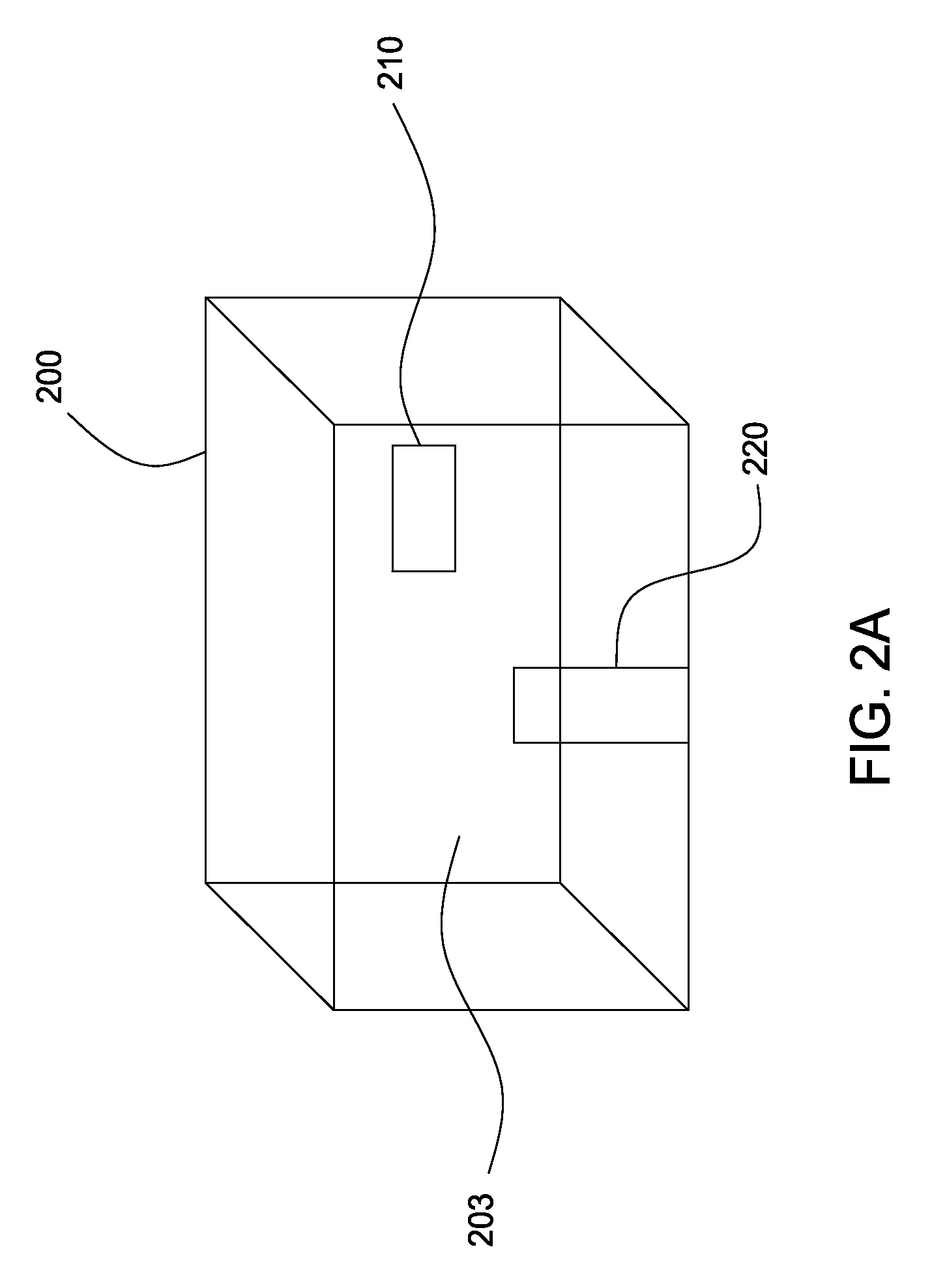Generating an analytical model of building for use in thermal modeling and environmental analyses
a technology of thermal modeling and environmental analysis, applied in the field of computer software, can solve the problems of inconvenient calculation of analytical models of buildings, inability to determine heating, ventilation and air in cad applications, and inability to accurately calculate the temperature of buildings,
- Summary
- Abstract
- Description
- Claims
- Application Information
AI Technical Summary
Benefits of technology
Problems solved by technology
Method used
Image
Examples
Embodiment Construction
[0021]Embodiments of the invention provide techniques for generating a thermal analysis model for a building. In one embodiment, a computer-aided design (CAD) model is used to generate an analysis model for determining the heating, ventilation, and air conditioning (HVAC) requirements of a given building design. Additionally, the CAD model may also be used to generate an analysis model for determining the lighting requirements, or other environmental features, for the building.
[0022]FIG. 1 is a block diagram illustrating a computer system 100 for generating a computational model of a building for use in thermal analysis, according to one embodiment of the invention. Note, the components illustrated in system 100 are included to be representative of computer software applications executing on existing computer systems, e.g., desktop computers, server computers, laptop computers, tablet computers, and the like. The software applications described herein, however, are not limited to an...
PUM
 Login to View More
Login to View More Abstract
Description
Claims
Application Information
 Login to View More
Login to View More - R&D
- Intellectual Property
- Life Sciences
- Materials
- Tech Scout
- Unparalleled Data Quality
- Higher Quality Content
- 60% Fewer Hallucinations
Browse by: Latest US Patents, China's latest patents, Technical Efficacy Thesaurus, Application Domain, Technology Topic, Popular Technical Reports.
© 2025 PatSnap. All rights reserved.Legal|Privacy policy|Modern Slavery Act Transparency Statement|Sitemap|About US| Contact US: help@patsnap.com



